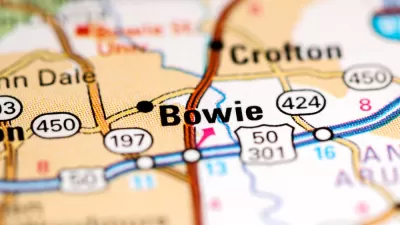Kristen Jeffers writes that she's changed her mind about the existence of hierarchies among U.S. cities.

Back in 2012, Kristen Jeffers, who blogs as The Black Urbanist, wrote an opinion piece proclaiming the death of the urban hierarchy. The pith of her argument at the time:
The point is, we are no longer in a rigid, true hierarchy of urban areas. Yes, media outlets, the federal government, stock traders, car companies and film stars may concentrate in certain areas, but these areas are more concentrations and gatherings than they are true indicators of influence.
Fast forward to 2016, and Jeffers has seen too much evidence to the contrary to hold onto that view. "The Urban Hierarchy Was Never Dead" reads the headline, as Jeffers explains the circumstances that led to her changing opinion:
After all, this was before I graduated from my MPA program, before I rented an apartment that almost bankrupted me, before I moved halfway across the country to improve my job prospects, before police brutalities, school failures, high rents and student debts, and finally bad local and state leadership could come in and cloud my view of the ability for all cities to be equal.
The post goes on to detail more of the ways hierarchies between cities are possible, concluding with a note of optimism.
FULL STORY: The Urban Hierarchy Was Never Dead

Maui's Vacation Rental Debate Turns Ugly
Verbal attacks, misinformation campaigns and fistfights plague a high-stakes debate to convert thousands of vacation rentals into long-term housing.

Planetizen Federal Action Tracker
A weekly monitor of how Trump’s orders and actions are impacting planners and planning in America.

In Urban Planning, AI Prompting Could be the New Design Thinking
Creativity has long been key to great urban design. What if we see AI as our new creative partner?

Florida Seniors Face Rising Homelessness Risk
High housing costs are pushing more seniors, many of them on a fixed income, into homelessness.

Massachusetts Budget Helps Close MBTA Budget Gap
The budget signed by Gov. Maura Healey includes $470 million in MBTA funding for the next fiscal year.

Milwaukee Launches Vision Zero Plan
Seven years after the city signed its Complete Streets Policy, the city is doubling down on its efforts to eliminate traffic deaths.
Urban Design for Planners 1: Software Tools
This six-course series explores essential urban design concepts using open source software and equips planners with the tools they need to participate fully in the urban design process.
Planning for Universal Design
Learn the tools for implementing Universal Design in planning regulations.
Gallatin County Department of Planning & Community Development
Heyer Gruel & Associates PA
JM Goldson LLC
City of Camden Redevelopment Agency
City of Astoria
Transportation Research & Education Center (TREC) at Portland State University
Jefferson Parish Government
Camden Redevelopment Agency
City of Claremont





























